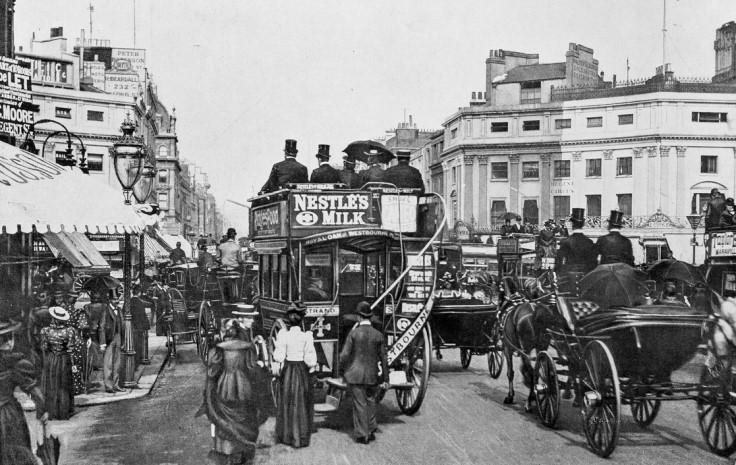The London skyline is a globally recognised image, distinctive for its fusion of historic and contemporary buildings. Every year, millions of people arrive from around the world to experience all that the UK capital has to offer. While some of the history integral to London’s appeal is well-documented, other aspects are less well-known. Here, we delve into some surprising facts about the history of London.

Gunpowder Was the Solution to The Great Fire of London
The Great Fire of London raged for four days from 2nd to 6th September 1666. It began in a bakery on Pudding Lane and spread so quickly because the hot summer had made the timber buildings of the time dry out and become a fire risk. Despite only directly causing six recorded deaths, the fire wreaked havoc on the city, laying waste to 13,200 houses and 87 churches, including the original St Paul’s Cathedral. Surprisingly, the solution to ending the fire was to use gunpowder – something generally best kept away from fire. The substance was utilised by the Navy to create explosions called ‘firebreaks’, which destroyed buildings before the fire spread to them, meaning it had nothing to latch on to and eventually ceased.The Tube Isn’t the Only Underground Railway in the City
No visit to the British capital is complete without a ride on the London Underground, colloquially known as ‘The Tube’. The first underground train, which was steam-powered, ran from Paddington to Farringdon and opened in 1863. In a matter of months, thousands of Londoners were using it every day. A lesser-known railway built underneath London is the ‘Mail Rail’. Opened in 1927, it was created to transport post between sorting stations. It was closed in 2003 after 76 years of service but reopened as a tourist attraction in 2017. The railway is driverless and runs for 5.5 miles from Paddington to Whitechapel. Visitors can enjoy this quirky attraction as part of a visit to The Postal Museum, just north of Farringdon Station.
The London Stock Exchange was Originally a Coffee Shop
The City of London is a central area of the capital best-known for being the country’s financial hub. Today, there is no shortage of coffee shops in its streets, which is apt given that the London Stock Exchange began life as one. In 1968, Jonathan’s Coffee House began to be used as a meeting place for traders, who would swap news and opinions about shares, and get the lowdown from merchants coming in and out of the city. It became integral to the city’s financial scene and eventually the club of traders who gathered at Jonathan’s came together to move to open a new premises in Sweeting’s Alley. This was then known as ‘The Stock Exchange’. The City of London today is home to a number of MICHELIN Guide restaurants, including Brigadiers, Cabotte and Bob Bob Ricard City.London Buses Weren’t Always Red
The iconic red double-decker is a global symbol of London. Walk down any street in the city and you’re bound to see at least one displaying its route number and destination. The very first bus routes (when the buses were still horse-drawn) were unregulated, but with more than 400 vehicles transporting passengers around, this became impractical. This chaotic system was replaced in the 1840s, as operators began working together and self-regulating routes. They created proper timetables and every operator had its own colour to help identify it. Eventually, a merger between operators led to red becoming the colour of the most powerful brand, the London General Omnibus Company, and it has remained the colour of London buses ever since. If you're planning a visit to the Biritish capital, check out our guide to London's rather more modern transport system.
Punch and Judy Debuted in the City
Punch and Judy were a beloved puppet show duo most notably associated with the British seaside, but central London was actually the site of the quarrelsome couple's UK debut. The character we now know as Mr Punch was based on Pulcinella, who came from the Italian commedia dell-arte tradition which used marionette puppets. A version of Pulcinella made his way to London, where a performance in Covent Garden was recorded by famed diarist Samuel Pepys in 1662. These days, London’s theatrical productions are a little more advanced than the days of Punch and Judy; the West End is famed all over the world for its musicals and plays. To ensure you don’t go hungry during your show, browse our list of pre-theatre dining spots in London.There Are Still Roman Walls in London
The Romans set up a community on the banks of the Thames in around 47AD, four years after landing in Britain. They named the settlement Londinium and Britain remained part of the Roman Empire until the early 5th century. In around 200AD, the Romans built a wall around Londinium, parts of which are still visible today. You can take a self-guided tour following the line of the original wall from the Tower of London to Millennium Bridge – look out for plaques that detail its history. The Roman Baths at Billingsgate and a reconstructed temple, London Mithraeum, are also ideal stops for the Roman history lover. If all this educational sightseeing leaves you hankering for some hearty Italian cuisine, then explore our list of the best Italian restaurants in London.
The Streets Were Paved with Wood
In 19th-century London, some road surfaces were in fact made of wood. Before this, cobbled stone had been the material of choice, but increased traffic – particularly horses’ hooves and carriage wheels – meant noise became a major problem on cobbled streets. After several trials, wooden paving was deemed the most cost-effective solution and was installed in the busiest parts of London. The practice was short-lived, with tar taking over in the early 20th century. There are still places where wooden paving pokes through, like in Belvedere Road (behind the London Eye), where wooden sections are dotted among the patchwork of contemporary materials.'Vegas Weddings' Happened in London
London was once the home of Vegas-style quick-fire weddings. For 141 years between 1613 and 1754, clandestine marriages were carried out in and around Fleet Prison, which was outside the church’s jurisdiction due to a quirk in the legal system. This allowed couples to get married without all the proper paperwork, making the process faster and cheaper. The weddings were initially held in the prison grounds but eventually moved outside where, in what was then a near-lawless area of the city, it was easy to find someone to conduct the ceremony. By around 1750, it’s believed that at least 10% of all marriages in England took place at Fleet Prison. The practice was eventually brought to an end with the Marriage Act of 1753.
Jack the Ripper was Never Identified
Holding the bizarre distinction of being both anonymous and incredibly famous, Jack the Ripper was the figure behind a reign of terror that began in 1888 and saw him claim at least five victims in the Whitechapel area of London. At that time, this district was a very deprived area, and attacks were commonplace. Nonetheless, the Ripper made headlines and has gone on to become an intriguing figure in the history of London. Many visitors take part in Jack the Ripper-themed tours – although Whitechapel today is far more elegant than it was in the Victorian era. The ripper’s real identity will never be known, but that just adds to the mystique.Hero Image: London as it once looked (© Nic_Taylor/iStock)









